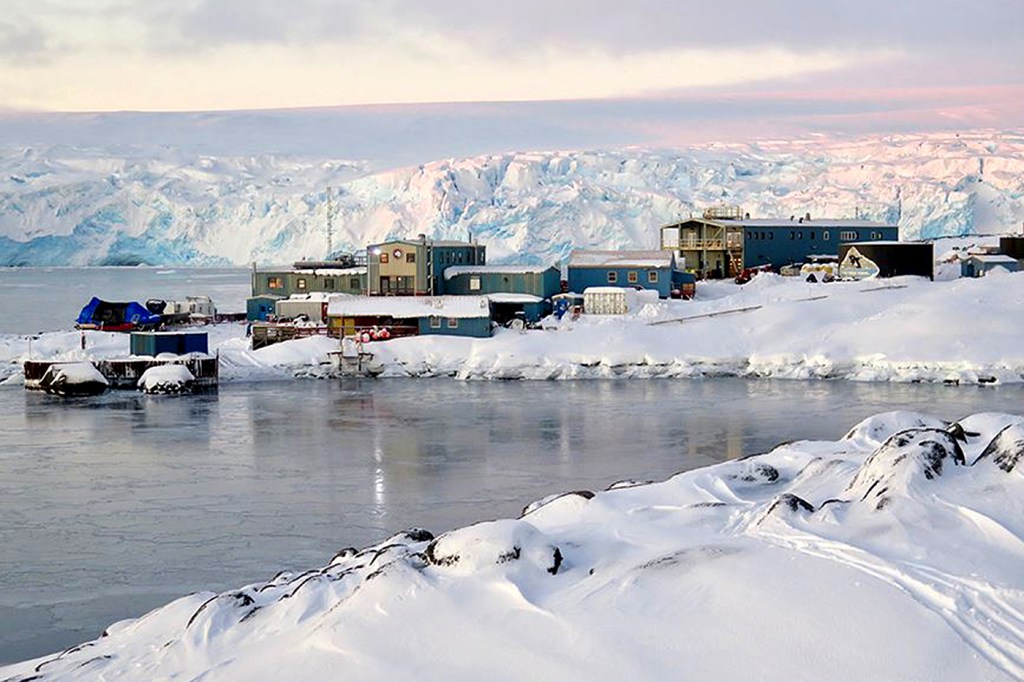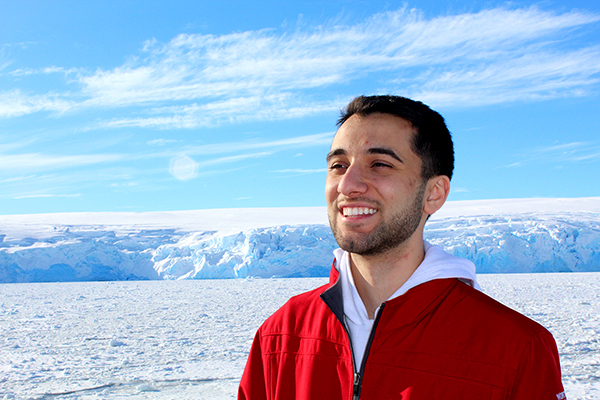Five things people get wrong about Antarctica

What comes to mind when you think of Antarctica? Gusts of wind blowing across a vast, empty tundra? Droves of penguins dancing and sliding across the ice like the ones in Disney’s Happy Feet? Well, all of that is wrong, according to Jake Grondin, a fourth-year Northeastern biology student who has been working on the vastly misunderstood continent since May.
“When people think of Antarctica, they think of flat, white plains that are always dark with only shacks for shelter,” said Grondin, who has been living at Palmer Station on Anvers Island. “But it’s actually really beautiful.”

Jake Grondin, a third-year Northeastern biology student, has been working in Antarctica since May. Photo courtesy of Jake Grondin.
Under Northeastern marine and environmental science professor H. William Detrich, Grondin studies the peculiar evolution of icefish, which have over time lost their red blood cells, but still manage to survive in crevices beneath the ice. The scientists’ goal is to find out if the species can continue to survive if the climate warms in their habitat.
The chance to participate in the six-month co-op in Antarctica was the deciding factor in Grondin’s choice to attend Northeastern, so he wants to set the record straight about what’s it really like to live on the polar ice.
- It’s cold, but nothing crazy. Grondin says temperatures are low, but nothing close to the frigid hell his friends imagine when he tells them that he lives about 600 miles south of Cape Horn, the tip of South America. “It’s been an average of 20 degrees Fahrenheit, plus or minus a few degrees depending on the wind,” said Grondin, who had no trouble embracing the cold. His favorite season is winter, which in Antarctica, starts in March and lasts until September.
- He doesn’t live among the animals. And no, there aren’t any polar bears here. “Everyone back home keeps asking me to send them pictures of penguins,” Grondin said. “I haven’t seen one penguin since I got here.” He says seals and and seabirds are the most common sightings, especially when he ventures off the ice in one of the station’s small boats to visit nearby islands or observe glaciers. As a rule, Grondin says, his team tries to avoid the animals they do see, so as not to disturb them.
- Speaking of rules, there are quite a few. Just because it’s remote and no one lives there doesn’t mean that Antarctica is a lawless ghost town. Residents at Palmer Station participate in zero-waste living, which means they leave no trace on the surrounding habitats, which have existed without human influence for millenia. “That means limiting the use of equipment outside the lab, how we dispose of human waste, and never littering,” he said. Leave-no-trace policies protect the animals and the environment, but there are also protocols in place to keep the people safe, such as wearing headlamps when it’s dark outside, signing in and out of the facilities, and checking in with the station every 20 minutes if you’re on the water.
- It’s not dark all the time. Anvers Island is north of the Antarctic Circle, so there will never be a full day of complete sun or complete darkness. When Grondin first arrived in May, there were four hours of daylight. “It made getting out of bed pretty difficult, because you don’t rise with the sun,” Grondin said. “But now that the weather’s getting warmer, we get about 12 hours of sunlight during the day.”
- Yes, he’s seen the glaciers melting, but he’s still optimistic about the future. If anything, since he moved to Antarctica Grondin has become more conscious of his environmental footprint by paying more attention to his electricity use, food waste, and transportation. He hopes to brings these habits back with him. “Seeing everyone at the station participate in zero-waste living shows me that even a small group of people can make a difference,” he said.




